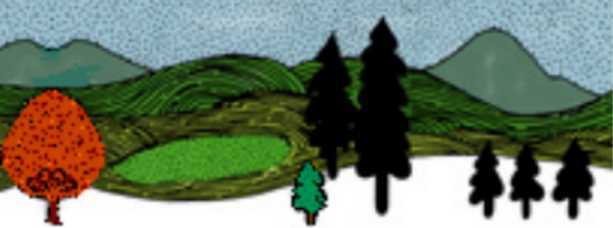

| Class,
Race,
and Gender in the U.S. Economy (Econ250/ES250) Reading
Asssignments
Spring 2008 Updated April 18, 2008 |
I.
Introduction
(WEEK 1 & 2) Readings: * required, o recommended 1) PURPOSE OF
COURSE: HONORABLE DISCUSSION
Handout/Online:
* The Stream, Leonel I.
Castillo, Studs Terkel (Handout)
2) A STATEMENT
OF THE PROBLEM
3) FRAMEWORK:
THE ECONOMICS OF STRATIFICATION
On Reserve/Handout:
Unlevel Playing Fields
* Ch. 1: Two Views on Inequality
and Discrimination
* Ch.2: Inequality by the
Numbers
4) LABOR
ECONOMICS: BASIC SUPPLY & DEMAND
Unlevel Playing Fields
* Ch.3: The Basics of Neo-Classical
Economics
|
III.
Race
(WEEK 6, 7, 8) 1)
EXPERIENCE OF RACISM
Webpage: Corporate
Discrimination
In
class: Molly
Bannaky
Jazz,
Episode 1 - Gumbo
2)
DISCRIMINATION & WHITE PRIVILEGE (Lecture)
3)
STATISTICAL DISPARITIES & ECONOMIC EVIDENCE OF RACIAL DISCRIMINATION
Unlevel Playing Fields
* Ch. 2, Labor market Inequality by the Numbers
a) Income, Wealth, Wage
Differentials
b) Unemployment Differentials c) Occupational Differentials d) Educational Differentials 4)
MODELS OF RACIAL DISCRIMINATION
Unlevel Playing Fields
* Ch. 5 -
Discrimination in the Neo-Classical View
A)
Neo-ClassicalDemand-Side
The "Taste for
Discrimination" (Racist Preferences):
Employer, Consumer,
Employee
Statistical
Discrimination (Stereotyping)
Pre-Market
Supply-Side Inequality of
Opportunity/Access
Inequality of Education B) Political Economy:
The Role of Social Movements, Institutions, & Power
Unlevel Playing Fields
* Ch. 7 - Work and
Wages in the Political Economy
* Ch. 8 –
The Political Economy Model of Discrimination
On Reserve:
*Black-White Income
Differences, Michael Reich
*Evidence on
Discrimination in Employment, Darity & Mason
5)
INSTITUTIONS & RACISM: EDUCATION, BANKING, & HURRICANE KATRINA
A) Banking
On Reserve: * Lending
Insights: Hard Proof that Banks Discriminate, Jim Campen
* Being Black, Living in the Red, Dalton Conley * Study Discerns Disadvantage for Blacks in Home Mortgages, Dedman, p. 228 B) Education
C) Poverty, Segregation, Disaster Preparedness, Disaster Relief, Reconstruction IV.
Ethnicity
(WEEK 9)
1)
WHAT IS “RACE”? WHAT IS “WHITENESS”?
A) A Biological Basis for
Race?
- phenotype
- genotype
- multiracial, multiethnic,
multicultural
On Reserve:
*A Growing Number of
Scientists Reject the Concept of Race, David
Wheeler
*Ever
adaptive, humans defy easy stereotype
B) Race Is Socially Constructed.
- How those “outside”
define
- How those “inside”
define
-
Self-selection & self-identification
C) Why The Government Defines Race And Collects Data.
Reserve:
º Can a New
Race Sumount Old Prejudices? Ellis Cose
º Race
classification causes census debate, William Hershey
º Who’s a
minority? Welcome to affirmative action debate, David Lauter
º We Need
New and Critical Study of Race and Ethnicity, Manning Marable
|
V.
Gender
(WEEK 10) 1)
WOMEN'S WORKING EXPERIENCE:
The Feminization of Poverty and the
Pauperization of Motherhood.
Handout:
Too Taxing on Women,
Register
Guard, April 14, 2006
Review:
*A
Portrait of Poverty
in
Oregon, OSU Extension Service
*Women
and
children most likely to be poor
2)
STASTICAL DISPARITIES & ECONOMIC EVIDENCE
Gender
Discrimination:
a)
Unemployment
Differentials
b) Wage
Differentials
c)
Occupational
segregation
d) Educational
Differentials
3)
MODELS OF HUMAN CAPITAL, EARNINGS AND OCCUPATIONAL DIFFERENCES
Albelda, et
al,
Unlevel Playing Fields (Review)
* Ch. 4
Work and
Wages in the Neo-Classical Model
* Ch. 5
Discrimination in the Neo-Classical View
˚ Ch. 6
The
Basics of Political Economy
* Ch. 7
Work and
Wages in the Political Economy
* Ch. 8 The
Political
Economy Model of Discrimination
|